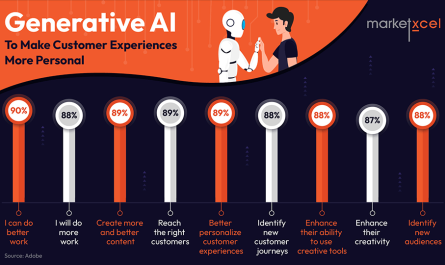Every year, on April 22nd, millions of people celebrate Earth Day. Planting trees, pledges to reduce plastic use, and trendy hashtags make up some of the small and big actions to appreciate and preserve the Earth. This year marks the 50th anniversary of Earth Day, one of the largest environmental movements in history.
But what is the story behind this globally celebrated day?
On April 22nd, 1970, 20 million people took to the streets in the United States to protest environmental destruction. This call to action was sparked by images of the Santa Barbara oil spill and took inspiration from the ongoing anti-war protests. Furthermore, the automobile industry had boomed and air pollution was rising but there was little concern regarding its environmental impact. The first Earth Day campaignled by Gaylord Nelson, a senator from Wisconsin, and a team of college students set out to raise public consciousness about air and water pollution. They encouraged others to organize in their cities and urged politicians to develop legislation that protected the environment.
The celebration and spirit of Earth Day continues today with a new generation of activists leading climate strikes around the world.
The climate strikes mobilized 6 million people and demonstrated that urgency around climate change is understood by more people today than ever before. However, with every leap forward, there is also push back. This could take the form of influential climate deniers , people feeling apathetic at the enormity of the problem, and governments that lack visionary planning to mitigate climate change impact.
In order to tackle this push back, Quilt.AI has built the first ever Climate Change Analysis Tool (CCAT) covering 3,500 cities. The dashboard is powered by people’s online search behaviour and public data on cities’ vulnerability and ability to handle climate change. It combines this data into a set of communication tools helping activists, organizations, and governments galvanize people into demanding climate action while being part of the solution.
The First Climate Change Analysis Tool
In every campaign, understanding one’s audience is key to ensuring the issue resonates with them. This can more effectively raise awareness, motivate people to make tangible changes in their daily actions or pressurize governments to create relevant policies.
Quilt.AI has developed 8 clusters of people’s attitudes towards climate change from ‘Avoidant’ to ‘Activists’ and communication strategies for each one. The dashboard uses data from the following 3 indices to determine people’s attitudes at a population-level:
- Climate Variability Index(CVI) – takes into account various climate/ weather related parameters (e.g. flood, storm, temperature changes) that affect the climate change and provides a risk factor in terms of the scale of climate change in the last few decades.
- Socio Economic Risk Index (SERI) – This index is an indicator of how well a city can handle large scale climate change events by considering the economic status, population, social conditions and the inequality in the society.
- Search Deniers Index (SDI) – is built by understanding the search behavior of people online, the volume of these keywords and terms. It is based on how much of the searches are around climate change denial and how much of this search behavior translates into political support for climate change.
There are nuances with each cluster as they vary by the levels within each index. For example, a city can be well prepared for climate action but there is little awareness among people on negative consequences from climate change and their role in reducing its impact.
The dashboard also provides a communication tool with each cluster that can push them to awareness, intention to act and gradually action. This tool includes examples of the type of communication message, problem to solve, and nudge to action.
Drawing from the dashboard’s data we identified 5 cities in each cluster of avoidant attitudes towards climate change and communication strategies for each one. These audience clusters are: Avoidant, Indifferent, Skeptical, Someone Else’s Problem, Unactivated Allies.
AVOIDANT
Climate impact may be evident but there is limited or no response to climate and climate action issues. A communication strategy centered around raising awareness then driving people to intentions to act is required.

Photo by Matteo Catanese from Unsplash
New York
There is a reason that New York is the city that never sleeps. It generates about 3% of the country’s total emissions with a meagre reduction of 13% in the last 30 years. Only 5% of its electricity comes from solar and wind energy.
New York’s leadership has passed laws to shift towards cleaner forms of energy. The aim is to be emissions free by 2040 and use renewable energy sources for 70% of electricity usage in the city. Despite these ambitious goals, there is a lack of investment in mass transit and public control over utility companies that contribute to emissions. Activists demand a halt on the ongoing constructions in the city to ensure they reduce climate change impact.
According to the Climate Change Analysis Tool, New York ranks high in climate vulnerability (81/100) and has a poor search denier score (51/100). This means the city will face a vast climate change impact, however few people residing in New York are aware of these future consequences. In the next few years, it is estimated that New York will see a 5 degree increase in temperature, damage to coastal habitat with sea levels rising and degrading air quality.
In order to galvanize people around the impending climate impact, the communication strategy to take is:
Problem to Solve: People do not believe that the climate is changing for the worse.
Nudge to Action:
- Nudge individuals to implement specific mitigation action for their home or that will protect their community
- Nudge individuals to fight against climate change and preserve the social fabric of community values.
Message Type:
- Remind them their home is slowly disappearing before their own eyes. If they do not take any action now, it will result in the destruction of their community and everything they hold dear (e.g. use graphic images of popular monuments, food joints, neighborhoods submerged in floods)
- Prompt them towards a specific call to action that saves their home, community and preserves their values and beliefs (e.g. be your community’s superhero by learning how to reduce, reuse and recycle every day!)
- Direct them to the nearest or most active environmental groups in their area (e.g. Get out and about in NYC – 5 environmental organizations to volunteer with this summer!)
Last year, 60,000 people gathered in New York to demonstrate against global climate change, however, localized efforts are required for the city to begin adapting for its own impact. Therefore, it is critical to use communication that raises awareness on the impact of climate change and reaches New Yorkers with personalized messages framed around specific actions.
INDIFFERENT
There is awareness of climate change but lacking visibility of its long-term impact. Not open to concerns about tackling climate change, or organizing around collective action.

Photo by Ridham Nagralawala from Unsplash
Ahmedabad
Ahmedabad, a bustling city in the state of Gujarat faced its worst heatwave in 2010 with temperatures reaching 47 degrees and more than 1,000 deaths. In response to this event, the state was the first in Asia to set up a climate change department and allocated $287 million USD from 2015 to 2020. However, the department has not spent more than Rs. 1.5 million USD every year.
Ahmedabad’s socio-economic risk index ranks high (68/100), bringing to the forefront Ahmedabad’s dense population of 8 million and its stark social inequities and economic conditions. Without any intervention, the increasing temperature and subsequent rainfalls will have the biggest effect on low-income communities living in slums. This indicator combined with the lack of searches about climate impact has catapulted Ahmedabad into an indifferent city where there is little to no movement around collective action on climate change.
In order to reach people in the city, it is necessary to have a strong communication strategy to help them feel like they can make a difference. This could mean:
Problem to Solve:
- Rapid environmental change can make people feel helpless and threatened by uncertainty.
- Low-income communities will bear the brunt of extreme heat waves and rainfall, so slums must become climate-resilient
Nudge to Action: Recognise the importance of acting as a global/regional community. Incite a sense of loyalty and connection to help at a global and regional level.
Message Type:
- Connecting people in the city with other climate activists on how to organize (e.g. reach out to Climate Sathis to learn about how you can help!)
- Informing them that the city’s heatwaves are due to climate change and will only get worse (e.g. The heat will persist because of climate change, but your actions can make a difference)
- Craft communication messages on how marginalized communities are differentially affected (e.g. Imagine your house burning up 5 degrees hotter every year, this is the reality in your city – contribute to making a difference)
In the past, the city government has launched awareness campaigns through their Heat Action Plan. They installed electronic temperature displays, provided ‘do’s and ‘don’ts’ during heatwaves and symptoms of dehydration. This response may be effective in addressing ongoing climate impact, however, more needs to be done to prevent severe consequences of climate impact in the future. This requires both demands from the public and accountability from the government.
SKEPTICAL
Climate change impact is visible, such as floods, but sustained political action is required to address climate change and mobilize collective action.

Photo by Greg Keelan from Unsplash
Jinan
Urbanization is a major driver of economic growth in China, but cities produce about 85% of China’s CO2. Jinan is one such city. Forty percent of its GDP comes from power plants, textile and steel production and chemical manufacturing. The city has taken measures to address emissions, including shutting down heavy emission enterprises, reducing fuel and raw materials, and providing allowances to purchase cleaner vehicles. Though these initiatives proved successful in decreasing air pollution, Jinan remains one of the most heavily polluted cities in China.
Quilt.AI’s dashboard shows that Jinan is at risk of climate impact, especially air pollution. The city requires additional measures and policies to monitor its industry-led economic model and coal burning in the winter. According to the dashboard, there is a lack of people in Jinan searching for the impact of climate change and there has been no action on demanding climate policies so far. However, in order to sustain ongoing progress and demand new policies, people in Jinan must continue to hold their leaders accountable and play a role in reducing air pollution.
Communication focused on building collective action can take the following strategy:
Problem to Solve:
To push people to rethink their everyday actions.
Nudge to Action:
- Recognise the importance of acting as a global/regional community.
- Incite a sense of loyalty and connection to help at a global and regional level.
Message Type:
- Starkly make individuals aware of the visible and tangible climate changes. These images and messages should make individuals feel alarmed and heighten fear. (e.g. capacity of children’s lungs because of air pollution)
- Show extreme temperature changes. Show images from the future which demonstrate what will happen if an individual takes no action. (e.g. Jinan permanently blanketed in soot from coal burning)
- Incite both individual and collective action by directly linking them to facts about their own country and domestic calls to action and petitions. (e.g. Without people’s help, air pollutants will increase by xx% and kill xx people)
SOMEONE ELSE’S PROBLEM
Less open to climate and climate action issues – it is a distant problem. Some amount of climate impact can be seen in air quality, water flooding, temperature.

Photo by Sid Saxena from Unsplash
Mumbai
Mumbai is home to 19 million people and some of the heaviest monsoons in India. The monsoon season is captured in pictures of people wading through knee-length murky water and cars flooded to the top.
Last year, the city experienced its heaviest rainfall with a record-setting 66% more rain since 1965. Quilt.AI’s dashboard shows a high volume of search for climate change impact in the city. People from Mumbai reported that changes in climate affected their access to resources (e.g. drinking water) and ability to earn money (97%) and stay healthy (98%). However, the proportion of people responding remains low and there is a lack of willingness to take action in the future.
The city’s policies reflect Mumbai’s combination of high awareness on climate change issues and low willingness to take action. Mumbai is at high risk of rising sea levels with coastal communities being at greatest risk. A report by the IPCC warned that cities like Mumbai, which have faster than predicted rising sea levels, will have a rapidly changing coastline. Climate change is evident and there is an urgent need for adaptation and action. However, the city’s ongoing infrastructure projects do not take this into account. For example, the construction of a new road on the western coast of Mumbai will be built on reclaimed land, making the city even more vulnerable to flooding.
The growing evidence of climate impact and apathetic responses so far contribute to the city’s classification of viewing climate change as ‘someone else’s problem’.
In order to hold policymakers accountable and drive people to action, the following communication strategy is possible:
Problem to Solve:
- Overcome inertia among policymakers to build a climate-resilient city for the future
- Environmental change is visible causing people to feel helpless in tackling the problem
Nudge to Action:
- By implementing a climate action plan, Mumbai can be hailed as an exemplar city to regional and global communities
- Infrastructural change will have economic benefits for the city as people are healthier, have livelihoods and can access resources
Message Type:
- Alert people that without their daily and policy-level actions, the city as they know it will change for the worst and destroy their communities (e.g. use data to show short-and long-term impact, like flooding, and how it will restrict basic resources)
- Direct them to networks of climate activists nationally and regionally (e.g. learn how to organize and demand action for policymakers for your future!)
- Prompt them towards a call to action directed at holding government accountability (e.g. use examples of other regional and global cities that are successful)
UNACTIVATED ALLIES
There are no direct visible impacts of climate change (e.g. air quality, temperature) but people are highly aware of it. A communication strategy focused on equipping allies with resources and information on how to act and contribute will show behaviour shifts.

Photo by Akira Amuro from Unsplash
Yangzhou
Like many other cities in China, Yangzhou is rapidly growing but has managed to protect its environment and traditional architecture through the local government’s commitment. They partnered with various entities like the German government and Institute for Sustainable Communities to plan and construct an eco-friendly city as it was urbanizing. The city continues to set an example on how to maintain low carbon emissions.
In comparison to the other cities, Yangzhou is equipping itself to remain a sustainable city by integrating green spaces, maintaining an ecological zone, and refurbishing the water treatment and industrial waste industries. Search for climate change is higher than in other cities, pointing to activists who are aware of the issues but uncertain on how to act on climate specific issues. Active allies require strategic nudges to craft their response measures, ensuring collective action can be sustained both in the short- and long-term.
Problem to Solve: People need to know how to translate their conviction into impact driven long-term and short-term action.
Nudge to Action:
- Equip people with tools to organize around collective action and specific demands
- Provide resources for people to implement specific mitigation action for protecting their homes and community (e.g. how to set up petitions)
Message Type:
- Remind them that there are other activists in the city, regionally and globally who can help them mobilize (e.g. building an activist network)
- Motivate them to participate in maintaining Yangzhon’s global reputation as an an eco-friendly city (e.g. 5 ways you can play a role in preserving Yangzhon’s rich environment)
- Direct them to the nearest or most active environmental groups in their area.
Climate change will become a visible reality to many if action is not taken at local and global levels. The interventions required will not happen overnight and require short-and long term planning. In order to catalyse these changes, people and policymakers must work together to address the impending realities of climate change. People can be driven to action in their daily lives or by holding their governments accountable. At the same time, local and global leaders must strive to build climate-resilient communities with economic and health benefits in mind.
Quilt.AI’s Climate Change Analysis Tool is a starting point to develop communication strategies targeted at various populations and their attitudes towards climate change. Through strategic campaigns and messaging, people can mobilize towards action – big and small – beginning to mitigate climate change risks and preserve the current planet for future generations.
This article was originally published here.














